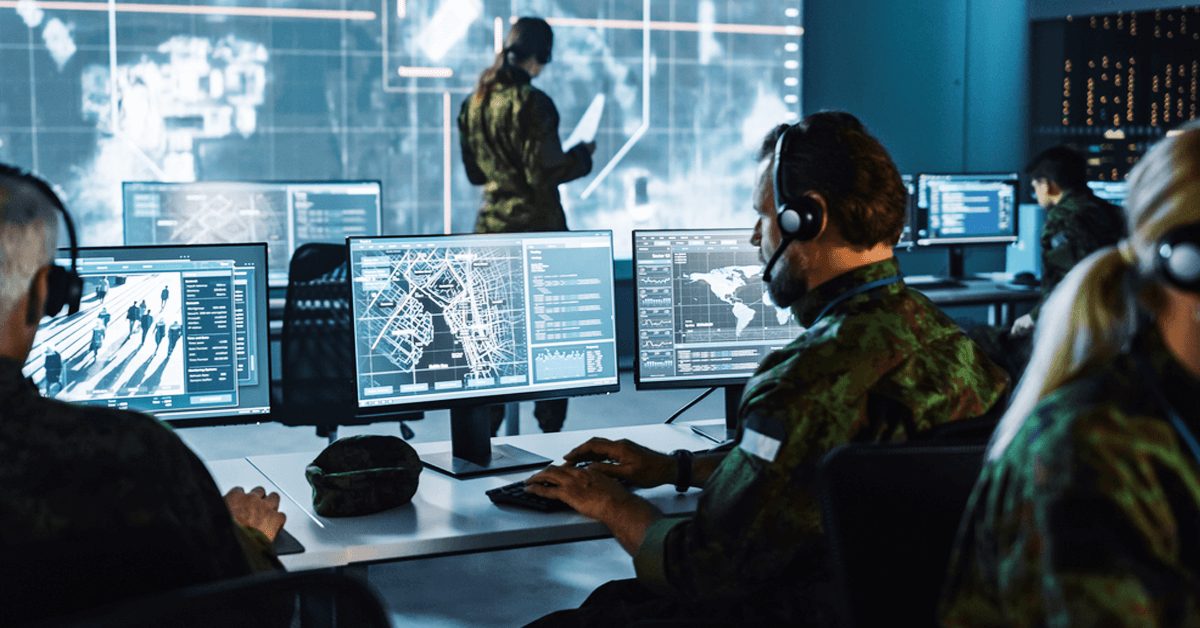Advancements in military technology are not a new subject, but the trends in advancement are. Conventional warfare is fading as hybrid strategies emerge utilizing autonomation and cyber programs. In addition, robotics, artificial intelligence, and cyber warfare are at the forefront of innovation. As a result, military technology continuously evolves and advances to ensure the United States of America can defend itself and its allies. Below is an overview of the top 10 trends in military technology today.
1. Artificial Intelligence
AI is a hot-button topic for military technology because there are significant hurdles to cross and ethical issues to address. However, AI is an inevitable advancement that holds promising opportunities for the protection and aid of military personnel.

2. Digital Healthcare Automation
Operational medical readiness is a time-consuming, manual process that strains military communications and efficiency. Outpatient App is the advancement in telehealth that efficiently streamlines the tracking and scheduling of military medical readiness, enabling the military to communicate faster and respond more effectively. The Outpatient App combines individual medical readiness with virtual health management and PHA scheduling. This all-in-one application simplifies medical appointments and combat readiness ability to ensure military personnel are up-to-date and prepared for any situation.

3. Hypersonic Missiles
Hypersonic speeds above one mile per second exceed those of supersonic speeds and carry a new set of technical issues to solve. Advancements in the field of hypersonic weapons improve military effectiveness and responsiveness.

4. Internet of Military Things (IoMT)
IoMT is the combination of cyber operations and machine intelligence. It is a conglomeration of devices, technologies, and the internet that simplifies and streamlines combat efficiency.

5. Unmanned Systems
Unmanned systems, such as unmanned aerial vehicles (UAVs), aid military forces in making improved decisions by providing detailed information and logistics in the field. These systems are advancing in their durability, communications, and capabilities.

6. Virtual Reality (VR) & Augmented Reality (AR) – Immersive Technologies
Military use of immersive technologies reduces expenses but also aids with training personnel to be better equipped for combat. VR and AR help with simulations, training, geographical awareness, and medical scenarios.

7. Cyber Warfare
As with conventional warfare, cyber warfare has defensive and offensive sides. However, cyber warfare focuses on the online presence of a country or military force. Cyber warfare improvements help protect a nation’s information network and related digital devices.

8. Collateral Damage Reduction
The US military operates under the Law of Armed Conflict, which protects civilians from direct and indirect attacks. However, war is not always a direct conflict, and the split second decision of enemy versus civilian is not always clear. Therefore, technological advancements to aid in this decision are vital for protecting military personnel and civilians.

9. Robotics & Autonomous Systems (RAS)
New military technologies currently being tested are robotic “dogs” like SPOT from Boston Dynamics and The Vision 60 from Ghost Robotics. These robots can deliver military supplies, “sniff” out bombs, and navigate harsh topography for data collection.

10. Additive Manufacturing (3D Printing)
Traditional military materials are metal, expensive, and difficult to transport due to their weight. By implementing 3D printing to manufacture parts, tools, and other military assets, the speed and cost of operations for the military can improve dramatically.

Conclusion
There are many other areas in which military technological advancements are occurring, but the significant improvements are in AI, automation, and robotics. In addition, companies such as Lockheed Martin and Outpatient App are pushing for progress in innovative ways. Military technology has always been and will remain at the forefront of innovation.










